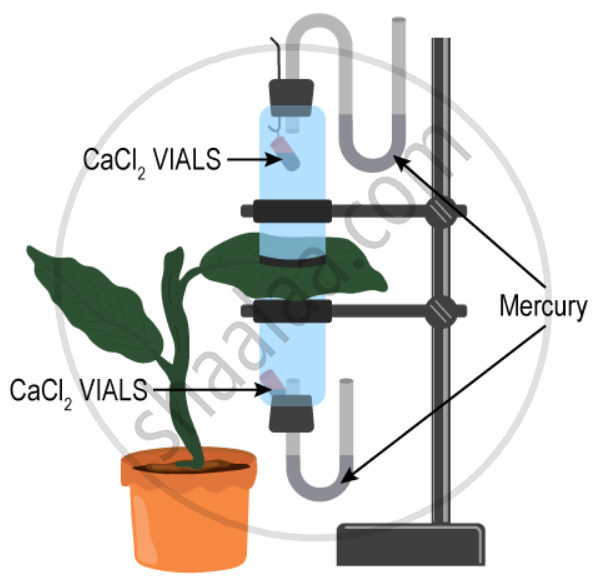Advertisements
Advertisements
Question
Solution
APPEARS IN
RELATED QUESTIONS
Choose the correct answer:
Stomata open during day time because guard cells
The apparatus shown in the following diagram is Garreau’s potometer designed to demonstrate unequal transpiration from the two surfaces of a dorsiventral leaf. Before keeping the leaf in between the cups, anhydrous calcium chloride (CaCl2) contained in two small vials were weighed and placed in both the cups. The ends of the cups were closed with corks through which two mercury manometers were connected. After few hours, CaCl2 vials were taken out and weighed again.

What is the purpose of using a manometer?
State the functions of guard cells.
How do stomata differ from a lenticel?
The figure below represents the vertical section of a leaf:

(i) Name the parts labeled 1 to 5.
(ii) What do the two arrows (dotted and solid) indicate in the day time and at night?
(iii) Could you add one more arrow in the figure? If yes, what for?
(iv) How many leaf veins have been shown in this section?
Given below is an experimental set up to study a particular process:

(i) Name the process being studied.
(ii) Explain the process named in (i) above.
(iii) Why is the pot covered with a plastic sheet?
(iv) Mention one way in which this process is beneficial to the plant.
(v) Suggest a suitable control for this experiment.
Name the following:
A potometer is an instrument for measuring the rate of the most transpiration in a herbaceous plant like Balsam occurs through which part.
Maximum transpiration occurs through ______.
The upper layer of mesophyll in a leaf consists of elongated ground tissue called ______.
